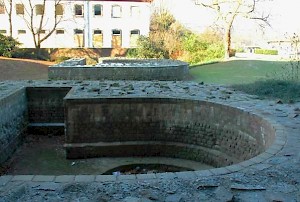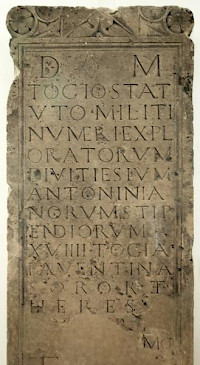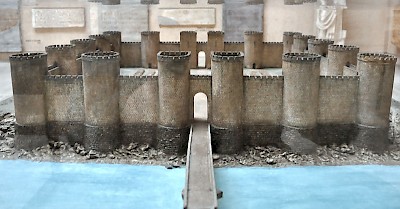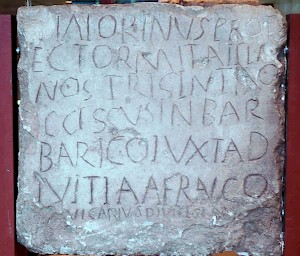Deutz (Divitia)
Q1735350Köln-Deutz: late-ancient castle, built to defend the Rhine bridge of Cologne, the capital of the province Germania Inferior.

In 37 or 19 BCE, the Romans transferred the Ubians from the east bank of the Rhine to the west bank, where they gave them a city called Ara Ubiorum, "altar of the Ubians". Initially, there were two legions stationed on this site (the Nineteenth was one of them), and after the battle in the Teutoburg Forest in 9 CE, I Germanica and XX Valeria Victrix are known to have stayed at Cologne. After 28, however, the town was no longer in use as a military settlement. Instead, it became the capital of Germania Inferior and in 50, it was promoted to the rank of colonia and received a new name: Colonia Claudia Ara Agrippinensium, from which the German name Köln and the English Cologne are derived.
Cologne became an important city with impressive fortifications, which were necessary to protect the inhabitants against the Germanic tribes. And to protect the bridge across the Rhine, Divitia was founded, a small limes castle on the east bank. The oldest archaeological finds suggest a date at the beginning of the first century. By then, its function was that of base for offensives in the east. Divitia was built on a high levee and offered accommodation to about 1,000 men, probably auxiliaries. It is possible that the emperor Domitian (r.81-96) ordered the construction of a bulwark with a more defensive function.

In the second century, we find a military unit called Numerus exploratorum Divitiensium. Its name suggests that it was from Divitia, but it is also attested in modern Mainz. Its surname Antoniniana suggests honorable behavior during a war waged by Caracalla.
In the early third century the Germanic tribes started to create large and dangerous federations like the Alamanni (in the south) and the Franks (in the north). In 254, the emperor Gallienus improved the walls of Cologne and Divitia, which was probably garrisoned by legionaries of VIII Augusta. This is a bit surprising, because this unit was from Strasbourg in Germania Superior, whereas Cologne was the capital of another province, Germania Inferior.
Whatever the explanation, the improved defenses did not prevent Frankish invasions in 260 and after 275. Roman control of the Lower Rhine area was seriously challenged and it was only much later that the emperor Constantius I Chlorus was able to restore order.
His son Constantine I the Great (r.306-337) is credited with rebuilding the bridge in about 310 CEnote while an inscription allows us to date the rebuilding of the fort to 315. Many stones were simply reused from the earlier building phase, and new tiles were made by two men, Capio and Adiutex, who had earlier contributed to the slightly younger basilica at Trier.

By now, a mounted subunit of the Second Legion Italica Pia had been transferred to Divitia from Noricum. This subunit was converted into an independent unit, II Italica Divitiensium, which played a role during the march on Rome of Constantine the Great and in the famous the battle near the Milvian bridge (312). In the fourth century, it belonged to the mobile field army.
When Roman control of the Rhineland collapsed in the first decade of the fifth century, Divitia became the capital of a Frankish king, who left Cologne to its bishop. The germanization of Divitia, however, had started earlier. In the fourth quarter of the fourth century, the castle had already been occupied by Germanic soldiers who were loyal to Rome. At the beginning of the next century, they just started for themselves.

Today, there's a small church, dedicated to Saint Urban, on the site of the headquarters of the ancient fort. To the east of the church are the remains of the fourth-century Porta Praetoria, i.e., the gate closest to the enemy.
Literature
- M. Carroll-Spillecke, "Das römische Militärlager Divitia in Köln-Deutz", in: Kölner Jahrbuch 26 (1993) 321–444
- M. Carroll-Spillecke, "The late Roman frontier fort Divitia in Cologne-Deutz and its garrisons", in W. Groenman-van Wateringe e.a. (eds.), Roman Frontier Studies 1995. Proceedings of the XVIth International Congress of Roman Frontier Studies (1997) Oxford, 143–9